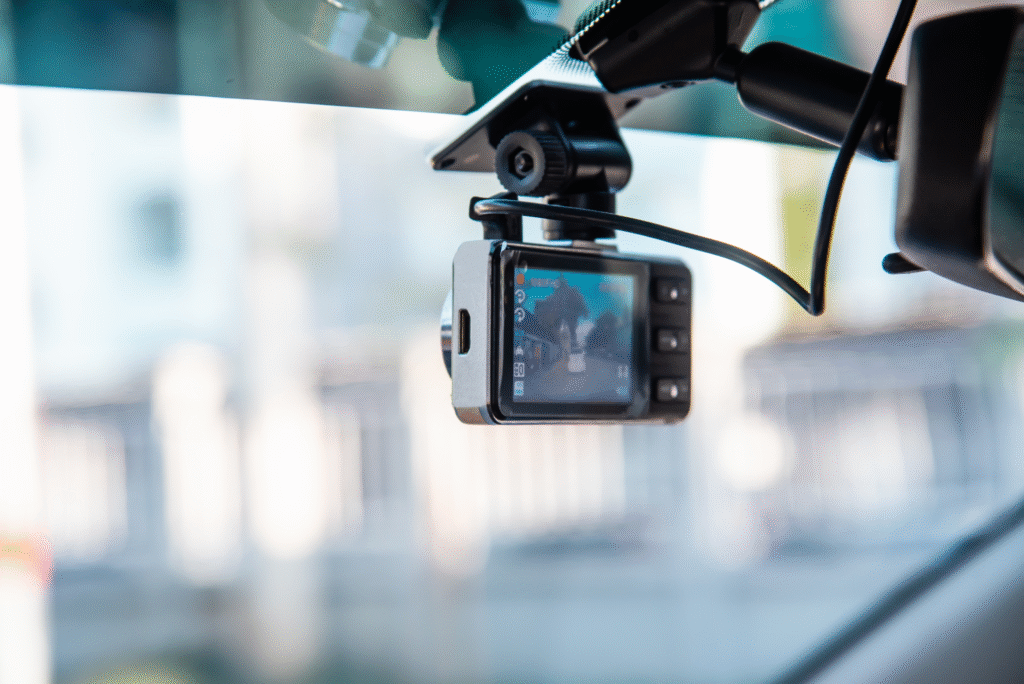Secure Your Journey: Loop Recording Dash Cam Must-Haves

Understanding Loop Recording Dash Cams
How Loop Recording Works
Loop recording is the superpower that keeps your dash cam rolling perpetually. It’s the trusty teammate that deletes old videos so you never run out of memory and always have the freshest clips available. As someone who zigzags through Lebanon’s bustling streets, I’m a big fan. It’s like having an unflinching eyewitness who never forgets.
So picture this: The camera records in bite-sized pieces, typically running from 1 to 5 minutes each. Once your memory card’s bursting at the seams, the cam kicks old clips to the curb and makes room for newbies, ensuring you always have eyes on the road.
| Segment Length (Minutes) | Storage Impact |
|---|---|
| 1 | Tiny Nibbler |
| 3 | Middle Ground |
| 5 | Heavy Hitter |
Importance of Loop Recording for Continuous Coverage
If you’re cruising in congested streets like me, loop recording is your go-to for uninterrupted playback of everything that happens behind the wheel. It’s like having your own little insurance policy that’s forever alert, capturing potential squabbles or crunch-time crashes.
The feature is a guarantee of calm because, with my dashcam, I’ve got surprises handled—be it a gentle tap or a pile-up. It’s the kind of set-it-and-forget-it convenience that makes managing footage a breeze and ensures those crucial clips don’t vanish into the digital ether.
And let’s talk extras—G-sensors can detect a smack, securing those vital videos, making sure they’re safe from the chopping block. Perfect for those moments where you need a replay to set things straight.
Pair loop recording up with night vision and GPS tracking, and suddenly you’ve got a gadget that’s not just a dash cam but a full-blown guardian angel. Who knew peace of mind could fit so snugly on a windshield?
Must-Have Features for Loop Recording Dash Cams
Alright, let’s talk dash cams and why they are like having an extra set of eyes on the road. Here’s what you gotta keep in mind to pick the best loop recording dash cam for your needs:
High-Quality Video Resolution
Good video quality is a game changer when it comes to dash cams. You want the video to be as clear as possible to catch those tiny but crucial details like license plate numbers and street signs. Here’s a breakdown of what different resolutions offer you:
| Resolution | Pixels | What’s In It for You? |
|---|---|---|
| 720p | 1280 x 720 | Basic stuff, works for everyday purposes |
| 1080p | 1920 x 1080 | Standard HD, great for most folks |
| 1440p | 2560 x 1440 | Crystal clear, more detail for the detail-hungry |
| 2160p (4K) | 3840 x 2160 | Top-level clarity, ideal if you enjoy spotting ants on the road |
For some nighttime magic, check out my tips on night vision dash cam – it’s a great sidekick to high resolution.
G-Sensor for Impact Detection
Don’t underestimate the power of a G-Sensor; it’s your guardian angel in case of a crash. It picks up on any sudden movements and saves the video clips from before, during, and after the action. Handy, right? This way, you got evidence secured without your old footage getting wiped out.
Wanna get more into how G-Sensors can save your bacon? Hit up my article on g-sensor dash cam.
Wide-Angle Lens for Comprehensive Coverage
Wide-angle lens? Yes, please! They expand your viewpoint, letting you catch more of what’s going down on the road. Observe even those sneaky cars suddenly merging into your lane, or that surprise jaywalker.
| Lens Angle | Field of View | What It Does Best |
|---|---|---|
| 120° | Basic view | Perfect for standard use |
| 140° | A touch more | Great for wider road pics |
| 170° | Go long | Excellent for reducing blind spots |
| 180° | See it all | Leaves little to the imagination |
With a wider lens, you’re looking at more thorough footage—less guesswork, more peace of mind. For more road-watch magic, dive into my piece on parking mode dash cam that pairs well with wide-angle lenses.
Get your loop recording dash cam with these features, and roll through Lebanon with the confidence of having reliable, clear, and solid evidence capturing every curve.

